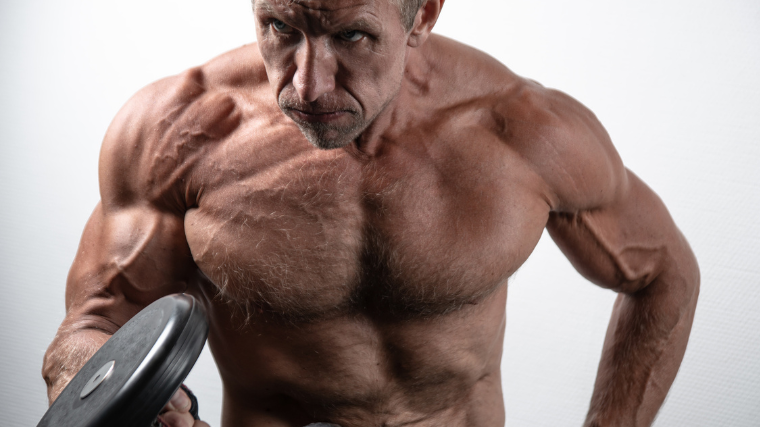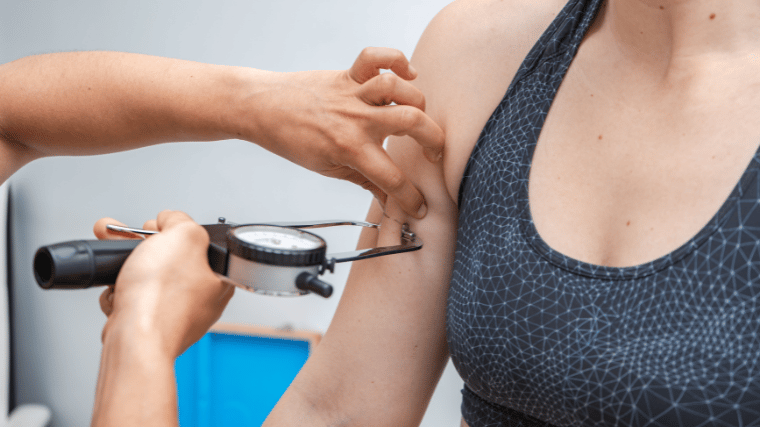Bodybuilding is a rich and storied sport. Since its earliest days, athletes have been borderline obsessed with the pursuit of the perfect physique. That century-spanning pursuit has created more than a few popular ideas that, upon inspection, may or may not stand up to scrutiny.
You may have heard of muscle maturity before but have never really taken the time to dissect what it actually means. It’s one of those things that makes perfect sense at a glance but can be more confusing the longer you think about it.

Do your muscles really “mature” the longer you use them? Are they any different on a biological level, or is muscle maturity more of a descriptor for how you should look after ten battle-hardened years in the weight room?
The Science of Muscle Maturity
Editor’s Note: The content on BarBend is meant to be informative in nature, but it should not be taken as medical advice. When starting a new training regimen and/or diet, it is always a good idea to consult with a trusted medical professional. We are not a medical resource. The opinions and articles on this site are not intended for use as diagnosis, prevention, and/or treatment of health problems. They are not substitutes for consulting a qualified medical professional.
What Is Muscle Maturity?
In bodybuilding circles, muscle maturity is meant to describe the appearance of your physique. Specifically, it’s the “look” of your muscles after a certain number of years of training, distinct from the shape and texture of a fresh-faced beginner.
Generally speaking, athletes with solid muscle maturity will have a harder, more grainy look to their physique, with deeper striations, more apparent dryness, and potentially sharper or more clearly defined angles.
[Related: Jay Cutler Reveals His Top Five Bodybuilders of All Time]
Conversely, there’s an implication to this moniker that you may have a softer look to your physique early on in your lifting career while you’re still developing and filling out your frame.
What the Science Says
Things that pass as sage advice from coach to athlete across generations may not stand up to scientific scrutiny. As a concept, muscle maturity is hard to pin down and study in a laboratory setting. Research on the idea in actual bodybuilders is sparse to nonexistent.
However, there are some works, mostly on animal muscle tissue, that may give credence to, or discredit, muscle maturity as an idea.
Do Your Muscles Change With Age?
Your body doesn’t stop changing just because you’re out of puberty. The quality and composition of your muscle tissue, though, may undergo some degree of physiological change as you add notches to your belt.
Some literature examining muscle tissue in animal carcasses has noted certain physiological differences between aged tissues and young ones. For instance, older animal muscle can possess lower amounts of intramuscular fat (fat concentrations within the sheath that houses muscle tissue), (1) contributing to a less “padded” look.
Aged muscle tissue is also regarded as less tender than younger tissue, potentially due to different collagen structuring as well as lower concentrations of intramuscular fat. (2)
Do Your Muscles Change With Training?
Fortunately, the effects of exercise (specifically weight lifting) on your muscles is far more clear. Anyone who has hit the iron and maintained a proper diet long enough will notice that their body grows and responds in kind.
On a physiological level, these changes reach past just making your biceps or quads a bit larger after enough arm or leg days.
Consistent resistance training creates marked changes in muscle fiber thickness and cross-sectional area, as well as the strength and durability of your associating connective tissues. (3)
Notably, training also affects your muscle tone. (4) While tone has the colloquial definition of shaping or defining a tissue in fitness circles, its scientific definition refers to the level of resting tension or tightness in a tissue. Your muscles do become more taut as you acclimate to regular lifting.
Can You Train for Muscle Maturity?
Unfortunately, there’s no clear answer to the question of whether muscle maturity is something you can tangibly impact by your behaviors in the gym, outside of just training normally.
It is worth noting that the literature marks a distinction between what it calls myofiber maturity — the complete regeneration of muscle tissue after it experiences physical trauma — and muscle maturity as regarded by bodybuilders. (5)
The former describes a biological process that happens following both a standard workout in the gym as well as a traumatic injury. The latter is an aesthetic descriptor.
Training for Hardness
Your muscles are composed of different types of fibers, some of which are better suited for certain tasks than others. (6)
However, that’s about as far as the literature goes regarding whether you can specifically train to harden your muscle tissues with regard to muscle maturity.
You can certainly train to develop athletic qualities like maximal strength, explosiveness, endurance, or size, but there isn’t a reliable body of evidence indicating how you exercise will impact the “hardness” of your muscles from a visual standpoint.
Reducing Body Fat
The physiological quality of your muscle tissue is just one facet that contributes to muscle maturity. While you can’t alter the biological makeup of muscle itself, you can help it appear more sharp or granular by reducing your body fat.
Fat stored beneath the skin (called subcutaneous fat) is drawn upon for energy when you’re in a caloric deficit. Much of the “slimming down” effect of a fat-loss diet comes from reducing this type of fat.
However, fat is also stored (in much smaller quantities) within your muscle tissue. Engaging in an effective hypocaloric diet will reduce your fat stores throughout your body, helping to define and emphasize your muscles themselves.
Note as well that you can’t really induce targeted fat loss — “spot reduction” is an unfortunate, but persistent, myth. If you’re dieting down in an effort to improve muscular definition or apparent maturity, your body will pull from its various fat stores independent of any actions you take.
The Role of Genetics
Any bodybuilder who has been in the game awhile knows the critical role genetics play in the sport, influencing everything from your rate of muscle gain to the shape and proportion of your physique.
Genetics also influence the thickness of your skin. Thin-skinned individuals (literally speaking) will generally have a more striated, defined appearance, while those with a thicker dermis may not.
Unfortunately, you can’t change your genetics. If you have thicker skin such that it obscures some of your muscular definition — even while at a very low level of body fat — that’s just the hand you’ve been dealt.
Your Takeaways
Muscle maturity is less of a tangible physiological phenomenon and more of a concept or “look” in bodybuilding.
There’s some evidence in the scientific community supporting the idea that your muscles do change over time, especially if you hit the weight room on a regular basis.
However, muscle maturity appears to be a culmination of factors, some of which are largely outside of your control:
- “Training age,” which refers to the number of cumulative months or years you have as a lifter.
- Genetics, specifically the thickness of your skin and your propensity for storing fat.
- Your level of muscularity combined with how much body fat you’re holding, both of which can be modified by training or diet.
You can think of muscle maturity as an informal description of a bodybuilder’s appearance, generally regarding how defined or “sharp” they look. It’s not an authoritative statement about the quality of your physique (or your gym career), and definitely shouldn’t be considered disparaging or discouraging.
Muscle Matters
Bodybuilding is as much about precise, targeted physique development as it is about art, symmetry, proportion, and aesthetics.
From the weight room to the science lab, bodybuilders rely on both the ancestral knowledge from the greats of years past and modern, cutting-edge research.
In the right contexts, muscle maturity provides a concise and apt description of a certain look that some physique enthusiasts strive for. But that doesn’t mean it should gatekeep your interest in the sport — or that it’s necessarily a real thing in the first place.
The best way to ensure you “mature” your physique properly is by sticking to the basics and exercising patience. If you train hard, eat well, rest and recover properly, and are willing to wait to see the fruits of your labor, the gains will speak for themselves with time.
References
- Moon, S. S., Yang, H. S., Park, G. B., & Joo, S. T. (2006). The relationship of physiological maturity and marbling judged according to Korean grading system to meat quality traits of Hanwoo beef females. Meat science, 74(3), 516–521.
- Shorthose W. R., Harris P. V. (1990) The Effect of Animal Age on the Tenderness of Selected Beef Muscles. Journal of Food Science 55(1), 1-8.
- Haun, C. T., Vann, C. G., Roberts, B. M., Vigotsky, A. D., Schoenfeld, B. J., & Roberts, M. D. (2019). A Critical Evaluation of the Biological Construct Skeletal Muscle Hypertrophy: Size Matters but So Does the Measurement. Frontiers in physiology, 10, 247.
- Otsuka, Y., Yamada, Y., Maeda, A., Izumo, T., Rogi, T., Shibata, H., Fukuda, M., Arimitsu, T., Miyamoto, N., & Hashimoto, T. (2022). Effects of resistance training intensity on muscle quantity/quality in middle-aged and older people: a randomized controlled trial. Journal of cachexia, sarcopenia and muscle, 13(2), 894–908.
- Yoshimoto, Y., Ikemoto-Uezumi, M., Hitachi, K., Fukada, S. I., & Uezumi, A. (2020). Methods for Accurate Assessment of Myofiber Maturity During Skeletal Muscle Regeneration. Frontiers in cell and developmental biology, 8, 267.
- Plotkin, D. L., Roberts, M. D., Haun, C. T., & Schoenfeld, B. J. (2021). Muscle Fiber Type Transitions with Exercise Training: Shifting Perspectives. Sports (Basel, Switzerland), 9(9), 127.
Featured Image: ivan_kislitsin / Shutterstock


